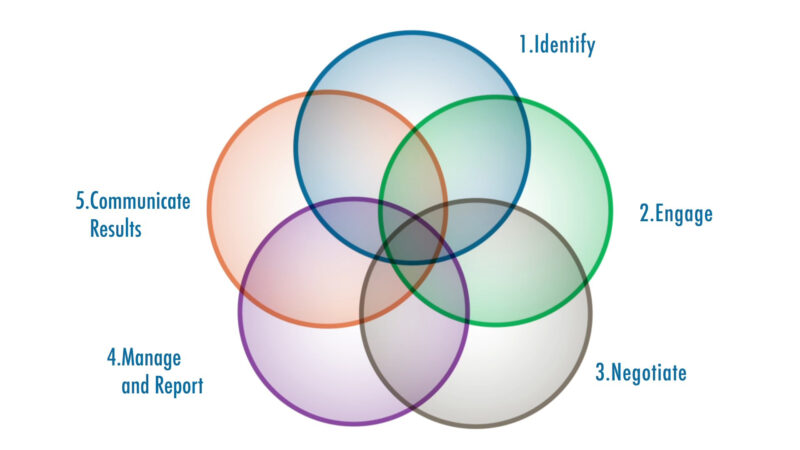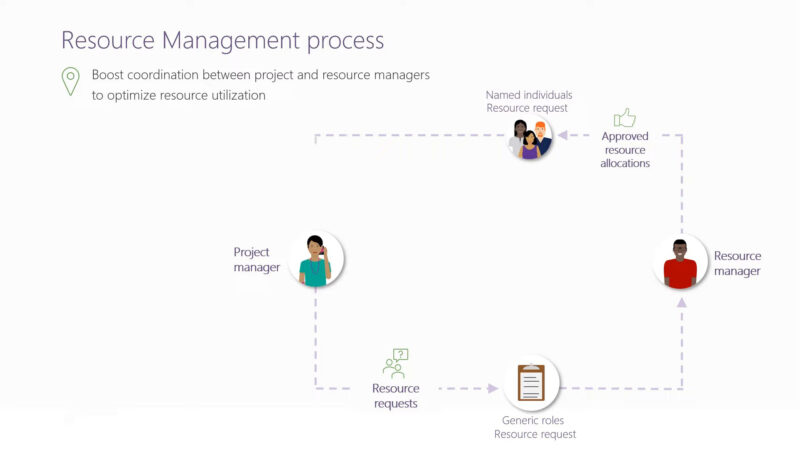In the dynamic field of project management, the effective deployment and activation of resources stand as a cornerstone of success. Today, I will talk about the world of resource management, focusing on the pivotal task of mobilization – the engine that powers the initiation and progression of projects.
We will discuss its details, challenges, and the critical role it plays in shaping project outcomes.
Key Takeaways
- Mobilization is Key: The process of mobilizing resources, including funds, personnel, and equipment, is crucial for the success of any project.
- Strategic Planning is Essential: Effective mobilization requires comprehensive planning, ensuring resources align with project objectives and are utilized efficiently.
- Challenges Must be Addressed: Common mobilization challenges, such as resource over-allocation and communication gaps, need proactive strategies to overcome.
- Technology Enhances Efficiency: Utilizing resource management tools like Trello and Monday can significantly streamline the mobilization process.
- Continuous Adaptation and Learning: Staying updated with the latest trends and practices in resource management is essential for success in this dynamic field.
Mobilization in Resource Management

Mobilization, in the context of resource management, is the process of deploying or activating personnel and resources for a project. It encompasses a series of actions aimed at gathering the necessary funds, personnel, equipment, and other resources essential for the successful execution of a project.
Key Components of Mobilization
- Funds Acquisition: The lifeblood that defines the project’s scope and duration.
- Personnel Activation: Aligning individuals with the requisite skills and readiness.
- Equipment Procurement: Ensuring the availability of necessary tools and technology.
- Budget Creation: Establishing a financial framework for project expenses.
How Does Mobilization Impact a Project?
Mobilization is not just about resource gathering; it’s about strategically assembling a mosaic of skills, tools, and finances to paint the bigger picture of project success. This process:
- Diversifies Resources: Bringing in varied skills and perspectives.
- Reduces Dependency: Minimizing reliance on external entities.
- Sustains Progress: Providing the backbone for ongoing organizational development.
- Expands Relations: Introducing new talent and ideas into the ecosystem.
Why is Mobilization Crucial?

Imagine a symphony orchestra where each musician represents a resource. Mobilization is the conductor, ensuring each player is in place, ready to contribute their unique sound at the right moment.
This harmonious coordination is vital for the symphony of project success.
Mobilization’s Role in Project Lifecycle
- Initiation Phase: Establishing the foundational resources.
- Planning Phase: Aligning resources with project goals.
- Execution Phase: Ensuring resources are effectively utilized.
Challenges in Resource Mobilization
Even the best-conceived plans face hurdles. In resource mobilization, these include:
- Over-allocation: Stretching resources too thin.
- Inadequate Planning: Leading to resource mismatches.
- Communication Gaps: Resulting in misaligned objectives.
- Flexibility Shortfalls: Impeding adaptability to project changes.
Mobilization Best Practices

How to Mobilize Effectively?
Successful mobilization is a blend of strategy, foresight, and adaptability. Here are some best practices:
- Comprehensive Planning: Ensuring alignment with project objectives.
- Effective Communication: Maintaining clear channels for coordination.
- Flexibility: Being prepared to adapt to changing project dynamics.
- Resource Optimization: Balancing resource allocation to avoid overuse or underuse.
Tools for Effectiveness
Leveraging technology can streamline the mobilization process. Popular tools include:
- Easynote and Asana: For task and project management.
- Trello and Monday: Offering visual project tracking and collaboration features.
Building a Resource Management Plan
A robust resource management plan is a blueprint for mobilization. It should detail:
- Resource Identification: Pinpointing what is needed.
- Acquisition Strategy: How to gather the required resources.
- Allocation Method: Assigning resources to various project aspects.
- Tracking Mechanism: Monitoring resource utilization throughout the project.
Mobilization in Action: Case Studies
To bring theory into context, let’s examine real-world scenarios where effective mobilization made a tangible difference. These examples illustrate how proper mobilization can pivot a project towards success or, conversely, how missteps in this area can lead to challenges.
Case Study 1: Successful Mobilization
In this scenario, a company adeptly mobilizes its resources for a new product launch. They:
- Identify Requirements: Pinpointing exactly what resources are needed.
- Strategize Acquisition: Gathering resources effectively.
- Activate Personnel: Ensuring the team is ready and equipped.
- Utilize Tools: Employing resource management tools for seamless coordination.
The result is a well-executed launch, with each resource playing its part effectively.
Case Study 2: Challenges in Mobilization
Contrastingly, another company faces hurdles in a similar project due to poor mobilization. They encounter:
- Resource Overlap: Leading to inefficiency.
- Communication Breakdown: Resulting in misaligned efforts.
- Inadequate Planning: Leaving gaps in resource needs.
This leads to a delayed launch and increased costs, underscoring the importance of effective mobilization.
Continuous Learning and Adaptation in Resource Management

Resource management is an ever-evolving field. Staying abreast of the latest techniques, tools, and trends is essential for anyone aspiring to excel in this area. It involves:
- Continuous Learning: Keeping skills and knowledge current.
- Adapting to New Methods: Embracing innovative approaches and technologies.
Building a Career in Resource Management
For those considering a career in resource management, it offers a rewarding journey filled with challenges and opportunities. Key skills include:
- Patience and Problem-Solving: Navigating the complexities of resource coordination.
- Strategic Planning: Anticipating and preparing for project needs.
- Effective Communication: Building and maintaining a cohesive team.
Common Pitfalls in Resource Mobilization
The path of mobilization is often strewn with potential pitfalls. Awareness and proactive strategies can help in navigating these effectively.
Common issues include:
- Resource Scarcity: When resources are limited, prioritizing and optimizing become key.
- Mismatched Skill Sets: Ensuring personnel align with the project’s specific needs.
- Budget Constraints: Balancing aspirations with financial realities.
- Technological Challenges: Keeping up with rapidly evolving tech requirements.
Strategies for Effective Navigation
To counter these challenges, consider the following approaches:
- Prioritization: Focus on critical resources that drive project success.
- Training and Development: Upskill personnel to meet project demands.
- Creative Budgeting: Explore alternative funding sources and cost-effective solutions.
- Tech Adaptation: Stay informed and flexible to integrate new technologies.
Mobilization as a Core Competency in Project Management
Why Mastery Matters
Mobilization is not just a task; it’s a fundamental competency in the arsenal of effective project management. It requires:
- Strategic Thinking: Seeing beyond immediate needs to long-term project success.
- Leadership Skills: Guiding teams and resources towards common objectives.
- Risk Management: Anticipating and mitigating potential resource-related risks.
- Collaborative Approach: Building synergies among diverse resources.
Developing Mobilization Expertise
For project managers and teams, developing expertise in mobilization involves:
- Continuous Learning: Keeping abreast of best practices and emerging trends.
- Practical Experience: Applying knowledge in varied project contexts.
- Feedback and Reflection: Learning from past projects to improve future mobilization strategies.
- Professional Development: Seeking training and certifications in resource management.
FAQs
What is the first step in the resource mobilization process?
The first step is to conduct a thorough needs assessment, identifying the specific resources (human, financial, technical) required for the project’s success.
How do you measure the effectiveness of resource mobilization?
Effectiveness is measured by evaluating how well the mobilized resources meet the project’s objectives, the efficiency in resource utilization, and the ability to stay within budget and timelines.
Can resource mobilization strategies vary based on project size?
Yes, strategies often vary with project size. Larger projects may require more complex and diverse resource mobilization strategies involving multiple stakeholders and larger budgets compared to smaller projects.
What role does technology play in resource mobilization?
Technology plays a crucial role in streamlining the mobilization process, from resource tracking and management to communication and collaboration among team members.
How important is risk management in resource mobilization?
Risk management is vital. It involves identifying potential resource-related risks (like shortages or cost overruns) and developing strategies to mitigate them, ensuring project stability.
Can resource mobilization impact project sustainability?
Yes, effective resource mobilization can positively impact project sustainability by ensuring the efficient use of resources, minimizing waste, and promoting eco-friendly practices.
Final Words
Mobilization in resource management is the vital task that sets the stage for project success. It involves a strategic combination of planning, communication, and adaptability.
By mastering the art of mobilization, organizations can not only achieve their project goals but also foster growth, innovation, and resilience in an ever-changing business landscape. Remember, like a maestro leading a symphony, effective mobilization harmonizes various resources into a cohesive and purpose-driven force, propelling projects toward their successful completion.
